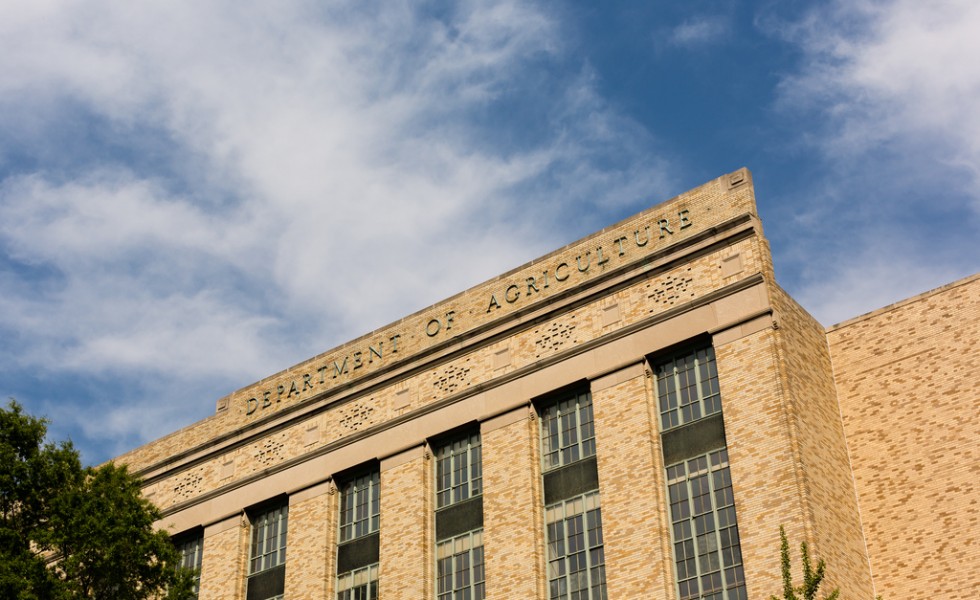USDA’s ‘Deeply Flawed’ $3 Billion ‘Climate Smart Commodities’ Program
Posted on November 11, 2022

Even at first glance, the U.S. Department of Agriculture’s (USDA) recently announced $3-billion-dollar “Partnerships for Climate-Smart Commodities” sounds like doublespeak, an Orwellian invention that reverses the meaning of words.
Or, more plainly, how can today’s commodity-centered, industrialized agriculture be remotely “climate-smart” when everyone in the food business readily acknowledges it’s an oil-gulping, climate-changing juggernaut?
The short, truthful answer is it can’t.
But don’t tell that to the blinkered politicians at USDA. On Sept. 14, USDA announced it “is investing up to $2.8 billion in 70 selected projects under the first Partnerships for Climate-Smart Commodities” to prove that it can be done.
This seemingly admirable attempt, suggests one Land Grant University agronomist deeply familiar with climate change ag research, is, in fact, USDA hoping to put 10 pounds of (organic material) into the proverbial five pound sack using just its checkbook. “Good luck,” he offers.
But it will try, for example, by examining how “to accelerate long-term cover crop adoption by creating a platform” that “will quantify, verify, and facilitate the sale of ecosystem benefits, creating a marketplace to generate demand for climate-smart commodities.”
The leader of this pie-in-the-sky, $95-million effort is that agricultural research powerhouse, the National Fish & Wildlife Foundation.
Don’t worry, though, the group will get ag help, explains USDA, from “other major partners” like the National Corn Growers Association and–curiously–two commodity checkoff groups, the National Pork Board and the United Soybean Board.
Even more curious is the presence of an even bigger helping hand, The Walton Family Foundation.
Why does the Wal-Mart clan want a fat finger in the cover-crop pie? USDA doesn’t say but the best guess is that the nation’s largest grocer needs a seat at this table so it can grab any hoped-for carbon credits to maintain–or even grow–its massive carbon footprint.
And so goes USDA’s grant-winning efforts for 26 more pages and another almost $2.6 billion of Commodity Credit Corporation cash.
Another program goal is USDA’s plan to “build markets and provide funding to farmers via outcome-based contracts for the reduction and removal of carbon dioxide through the adoption of new climate-smart practices.”
USDA doesn’t say what these “new practices” might be but it will cost U.S. taxpayers another $95 million to find out. Maybe.
USDA does acknowledge, however, that this project’s “major partners” include PepsiCo, Cargill, Target, and Coca-Cola.
These agbiz super powers aren’t the only elephants crowding USDA’s carbon trough. Other partners in other projects include Archer Daniels Midland, John Deere, Campbell Soup, Keurig-Dr. Pepper, Nestle’, Mosaic, Anheuser-Busch, Smithfield Foods, Bayer, and many more.
All, explains USDA, will dig into ways to make more than 50 commodities–from corn to flax to chickens to forestry to fisheries–“climate smart” in the next two to five years.
How, of course, will be a real trick because today’s American food production machine is a fully integrated, farm-to-table factory that hums on fossil fuels and belches out greenhouse gases like methane, nitrous oxide, and CO2.
Very few in ag research, though, expect any breakthroughs: Commodity agriculture can’t be made “climate smart” because commodity agriculture, at its core, is already an incredibly productive, climate-changing machine.
“We know,” says one Land Grant University agronomist, “that we can’t sequester carbon in any appreciable amount in today’s commodity production systems. Not through conventional tillage, not through minimum till, not through no-till. That’s just an agronomic fact. So what are we doing with these USDA projects?” he wonders.
Another Land Grant University researcher is more blunt in his view of USDA’s “climate-smart” effort: “A model relying on those that caused the problem to solve the problem is a deeply flawed model,” he offers.
And, he adds, “[T]he ‘smart’” to the money-dripping effort “is in those who get this type of money to do nothing. It’s beyond smart, it is genius.”
But it’s not any real, lasting climate solution, notes a third Land Grant University researcher. “This is all greenwashing–vanity and greenwashing–to keep today’s ag policies in place.”
So up is down and smart is dumb, and somewhere George Orwell is smiling.
© 2022 ag comm

Your article Howard’s priceless gift of simple giving was a excellent read,and the one of you camping by the river…I lived in industry il,I can relate to your farming and old day stories…born in 1957,it was a good time to be alive,simple 4 sure,thank u…